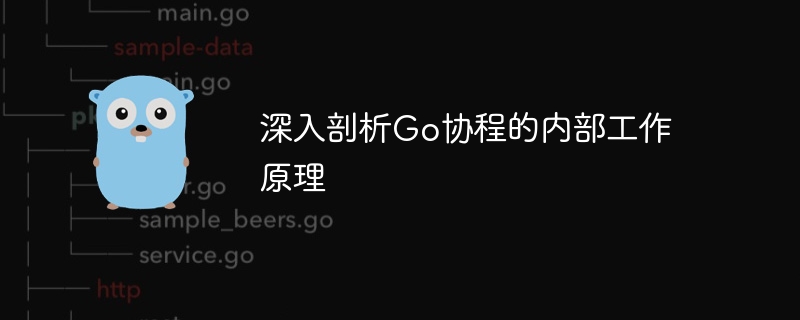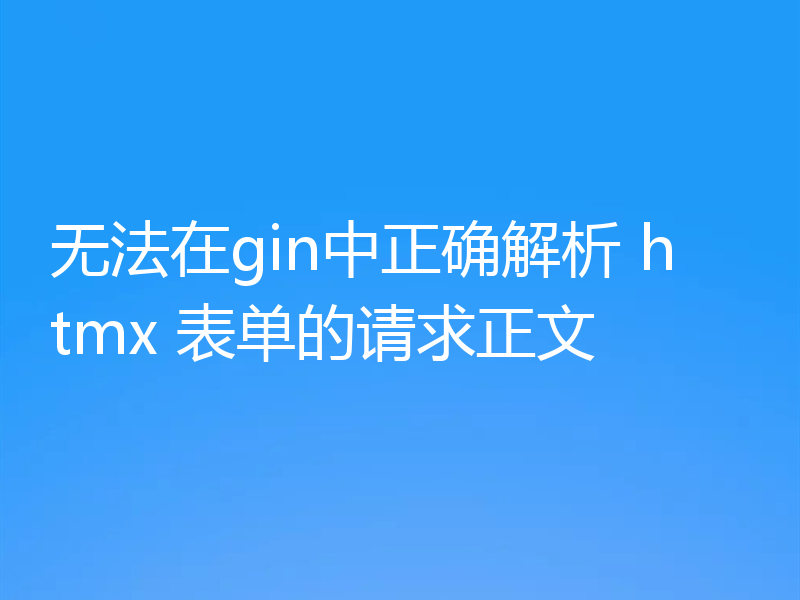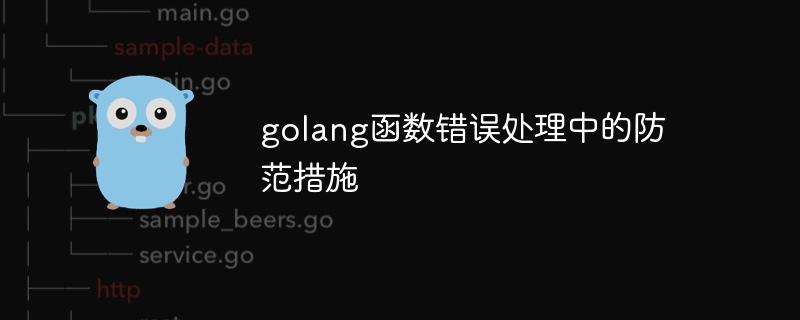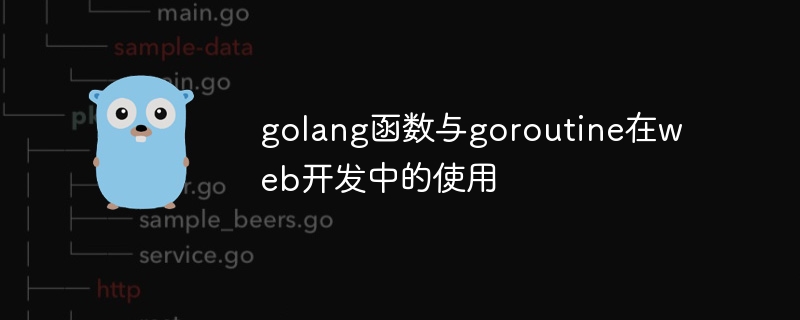Golang学习之基于OpenCart的Web应用程序开发
随着Internet技术的不断发展和普及,Web应用程序的开发越来越受到人们的关注,而Golang作为一种快速,高效的编程语言,也越来越受到Web开发者的青睐。本文将介绍如何基于OpenCart开发一个Web应用程序。
OpenCart是一款免费开源的电子商务平台,它使用PHP作为开发语言,提供了强大易用的电子商务功能,如商品管理、订单管理、支付处理、物流管理等。但是,PHP作为一种解释型语言,其执行效率较低,无法满足高并发、大数据量的Web应用程序的开发需求。此时,Golang作为一种编译型语言,具有比PHP更快的执行速度和更好的并发能力,因此可以作为OpenCart的优秀替代品。
在本文中,我们将基于OpenCart开发一个在线商城应用程序,该程序使用Golang作为后端语言,使用MySQL作为数据存储,实现商品展示、搜索、购买、订单管理等功能。本文主要包括以下几部分内容:
在我们的应用程序中,我们需要存储商品数据、用户数据、订单数据等信息。我们设计一个数据库,并创建相应的表,来管理这些数据。
首先,我们创建一个数据库ocdb(OpenCart数据库),并定义商品、用户、订单三个表。
商品表:
CREATE TABLE product (
id int(11) NOT NULL AUTO_INCREMENT,
name varchar(255) NOT NULL,
price decimal(10,2) NOT NULL,
description text,
image varchar(255) NOT NULL,
PRIMARY KEY (id)
) ENGINE=InnoDB DEFAULT CHARSET=utf8;
用户表:
CREATE TABLE user (
id int(11) NOT NULL AUTO_INCREMENT,
username varchar(50) NOT NULL,
password varchar(255) NOT NULL,
email varchar(255) NOT NULL,
PRIMARY KEY (id)
) ENGINE=InnoDB DEFAULT CHARSET=utf8;
订单表:
CREATE TABLE order (
id int(11) NOT NULL AUTO_INCREMENT,
user_id int(11) NOT NULL,
product_id int(11) NOT NULL,
quantity int(11) NOT NULL,
total decimal(10,2) NOT NULL,
status tinyint(1) NOT NULL DEFAULT '0',
PRIMARY KEY (id)
) ENGINE=InnoDB DEFAULT CHARSET=utf8;
在以上表中,商品表中包含商品的名称、价格、描述、图片等信息;用户表中包含用户的用户名、密码、电子邮件地址等信息;订单表中包含订单的用户ID、商品ID、数量、总价及订单状态等信息。
在后端开发中,我们需要实现各种功能API接口。首先,我们需要创建一个名为app的Go模块。在app模块中,我们编写服务器程序逻辑。
将以下代码保存为app.go文件。
package main
import (
"database/sql"
"encoding/json"
"fmt"
"log"
"net/http"
_ "github.com/go-sql-driver/mysql"
)
type Product struct {
ID int `json:"id"`
Name string `json:"name"`
Price float32 `json:"price"`
Description string `json:"description"`
Image string `json:"image"`
}
type User struct {
ID int `json:"id"`
Username string `json:"username"`
Password string `json:"password"`
Email string `json:"email"`
}
type Order struct {
ID int `json:"id"`
UserID int `json:"user_id"`
Product Product `json:"product"`
Quantity int `json:"quantity"`
Total float32 `json:"total"`
Status int `json:"status"`
}
func main() {
http.HandleFunc("/api/products", getProducts)
http.HandleFunc("/api/users", getUsers)
http.HandleFunc("/api/orders", getOrders)
http.HandleFunc("/api/order/create", createOrder)
log.Fatal(http.ListenAndServe(":8080", nil))
}
func getProducts(w http.ResponseWriter, r *http.Request) {
db, err := sql.Open("mysql", "root:password@tcp(127.0.0.1)/ocdb")
if err != nil {
log.Fatal(err)
}
defer db.Close()
rows, err := db.Query("SELECT * FROM product ORDER BY id DESC")
if err != nil {
log.Fatal(err)
}
defer rows.Close()
products := []Product{}
for rows.Next() {
product := Product{}
err := rows.Scan(&product.ID, &product.Name, &product.Price, &product.Description, &product.Image)
if err != nil {
log.Fatal(err)
}
products = append(products, product)
}
w.Header().Set("Content-Type", "application/json")
json.NewEncoder(w).Encode(products)
}
func getUsers(w http.ResponseWriter, r *http.Request) {
db, err := sql.Open("mysql", "root:password@tcp(127.0.0.1)/ocdb")
if err != nil {
log.Fatal(err)
}
defer db.Close()
rows, err := db.Query("SELECT * FROM user ORDER BY id DESC")
if err != nil {
log.Fatal(err)
}
defer rows.Close()
users := []User{}
for rows.Next() {
user := User{}
err := rows.Scan(&user.ID, &user.Username, &user.Password, &user.Email)
if err != nil {
log.Fatal(err)
}
users = append(users, user)
}
w.Header().Set("Content-Type", "application/json")
json.NewEncoder(w).Encode(users)
}
func getOrders(w http.ResponseWriter, r *http.Request) {
db, err := sql.Open("mysql", "root:password@tcp(127.0.0.1)/ocdb")
if err != nil {
log.Fatal(err)
}
defer db.Close()
rows, err := db.Query("SELECT * FROM `order` JOIN user ON `order`.user_id=user.id JOIN product ON `order`.product_id=product.id ORDER BY `order`.id DESC")
if err != nil {
log.Fatal(err)
}
defer rows.Close()
orders := []Order{}
for rows.Next() {
order := Order{}
err := rows.Scan(&order.ID, &order.UserID, &order.Product.ID, &order.Product.Name, &order.Product.Price, &order.Product.Description, &order.Product.Image, &order.Quantity, &order.Total, &order.Status)
if err != nil {
log.Fatal(err)
}
orders = append(orders, order)
}
w.Header().Set("Content-Type", "application/json")
json.NewEncoder(w).Encode(orders)
}
func createOrder(w http.ResponseWriter, r *http.Request) {
db, err := sql.Open("mysql", "root:password@tcp(127.0.0.1)/ocdb")
if err != nil {
log.Fatal(err)
}
defer db.Close()
if r.Method != http.MethodPost {
w.WriteHeader(http.StatusMethodNotAllowed)
fmt.Fprintf(w, "Invalid request method. Method should be POST")
return
}
r.ParseForm()
userID := r.FormValue("userID")
productID := r.FormValue("productID")
quantity := r.FormValue("quantity")
total := r.FormValue("total")
stmt, err := db.Prepare("INSERT INTO `order` (user_id, product_id, quantity, total) VALUES (?, ?, ?, ?)")
if err != nil {
log.Fatal(err)
}
defer stmt.Close()
res, err := stmt.Exec(userID, productID, quantity, total)
if err != nil {
log.Fatal(err)
}
lastID, err := res.LastInsertId()
if err != nil {
log.Fatal(err)
}
w.Header().Set("Content-Type", "application/json")
json.NewEncoder(w).Encode(map[string]interface{}{"msg": "订单创建成功!", "orderId": lastID})
}在以上代码中,我们通过Go语言标准库中的net/http包来创建Web服务器,监听8080端口,并定义了四条API路由。
在getProducts函数中,我们从数据库中查询商品信息,并使用JSON格式返回结果。
在getUsers函数中,我们从数据库中查询用户信息,并使用JSON格式返回结果。
在getOrders函数中,我们从数据库中查询订单信息,并使用JSON格式返回结果。
在createOrder函数中,我们获取前端发送过来的订单信息,并将其插入订单表中,并返回订单号。
在以上代码中,我们使用了Go语言标准库中的database/sql包来连接MySQL数据库。我们使用了MySQL驱动程序(github.com/go-sql-driver/mysql),以便于Go语言与MySQL的交互。
在以上的API接口中,我们定义了四个API,即:
(1)获取商品信息API:/api/products
(2)获取用户信息API:/api/users
(3)获取订单信息API:/api/orders
(4)创建订单API:/api/order/create
为了使用以上API,我们需要在前端向这些URL发送请求,并处理响应。在前端代码中,我们使用jQuery来发送HTTP请求,并使用Bootstrap进行页面布局和样式调整。
我们将以下代码保存为index.html文件。
<!doctype html>
<html>
<head>
<meta charset="utf-8">
<meta name="viewport" content="width=device-width, initial-scale=1, shrink-to-fit=no">
<title>在线商店</title>
<link rel="stylesheet" href="https://cdn.bootcdn.net/ajax/libs/twitter-bootstrap/4.5.2/css/bootstrap.min.css">
<script src="https://cdn.bootcdn.net/ajax/libs/jquery/3.5.1/jquery.min.js"></script>
<script src="https://cdn.bootcdn.net/ajax/libs/twitter-bootstrap/4.5.2/js/bootstrap.min.js"></script>
</head>
<body>
<nav class="navbar navbar-expand-lg navbar-dark bg-dark">
<a class="navbar-brand" href="#">在线商店</a>
</nav>
<div class="container mt-3">
<div class="row">
<div class="col-sm">
<h2>商品列表</h2>
<table class="table table-striped table-hover">
<thead>
<tr>
<th>编号</th>
<th>名称</th>
<th>价格</th>
<th>描述</th>
<th></th>
</tr>
</thead>
<tbody id="productTableBody">
</tbody>
</table>
</div>
<div class="col-sm">
<h2>创建订单</h2>
<form>
<div class="form-group">
<label for="userID">用户ID</label>
<input type="text" class="form-control" id="userID" placeholder="请输入用户ID">
</div>
<div class="form-group">
<label for="productID">商品ID</label>
<input type="text" class="form-control" id="productID" placeholder="请输入商品ID">
</div>
<div class="form-group">
<label for="quantity">数量</label>
<input type="number" class="form-control" id="quantity" placeholder="请输入购买数量">
</div>
<div class="form-group">
<label for="total">总价</label>
<input type="number" class="form-control" id="total" placeholder="请输入订单总价">
</div>
<button type="submit" class="btn btn-primary">创建订单</button>
</form>
</div>
</div>
<hr>
<h2>订单列表</h2>
<table class="table table-striped table-hover">
<thead>
<tr>
<th>订单编号</th>
<th>用户ID</th>
<th>商品名称</th>
<th>商品价格 </th>
<th>数量</th>
<th>订单总价</th>
<th>订单状态</th>
</tr>
</thead>
<tbody id="orderTableBody">
</tbody>
</table>
</div>
<script>
$(document).ready(function() {
// 加载商品列表
$.get("/api/products", function(data, status) {
if (status == "success") {
var productList = "";
data.forEach(function(product) {
productList += "<tr>"
productList += "<td>"+product.id+"</td>"
productList += "<td>"+product.name+"</td>"
productList += "<td>"+product.price+"</td>"
productList += "<td>"+product.description+"</td>"
productList += '<td><img src="'+product.image+'" alt="" style="width:100px"></td>'
productList += "</tr>"
});
$("#productTableBody").html(productList);
}
});
// 加载订单列表
$.get("/api/orders", function(data, status) {
if (status == "success") {
var orderList = "";
data.forEach(function(order) {
orderList += "<tr>"
orderList += "<td>"+order.id+"</td>"
orderList += "<td>"+order.userID+"</td>"
orderList += "<td>"+order.product.name+"</td>"
orderList += "<td>"+order.product.price+"</td>"
orderList += "<td>"+order.quantity+"</td>"
orderList += "<td>"+order.total+"</td>"
orderList += "<td>"+order.status+"</td>"
orderList += "</tr>"
});
$("#orderTableBody").html(orderList);
}
});
// 创建订单
$("form").submit(function(event) {
event.preventDefault();
var userID = $("#userID").val();
var productID = $("#productID").val();
var quantity = $("#quantity").val();
var total = $("#total").val();
$.post("/api/order/create", {
userID:userID,
productID:productID,
quantity:quantity,
total:total
}, function(data, status) {
alert(data.msg);
});
});
});
</script>
</body>
</html>在以上代码中,我们使用jQuery的$.get()和$.post()方法来分别获取商品列表和订单列表,并向服务器发送创建订单请求,处理服务器的响应数据。
在前端代码中,我们使用了Bootstrap框架来美化页面样式,并使用了jQuery库来与Web服务器交互。我们在index.html文件中定义了一个动态的页面,其中使用Bootstrap的表格来展示商品列表和订单列表,并使用表单来支持创建订单。当用户点击“创建订单”按钮时,我们使用jQuery的$.post()方法向服务器发送订单信息。
综上所述,我们可以使用Golang基于OpenCart开发Web应用程序的开发,并将其应用于在线商城应用程序的开发,从而实现商品展示、搜索、购买、订单管理等功能。需要注意的是,应该严格遵守Web安全性的最佳实践,将数据的安全性放在第一位。





